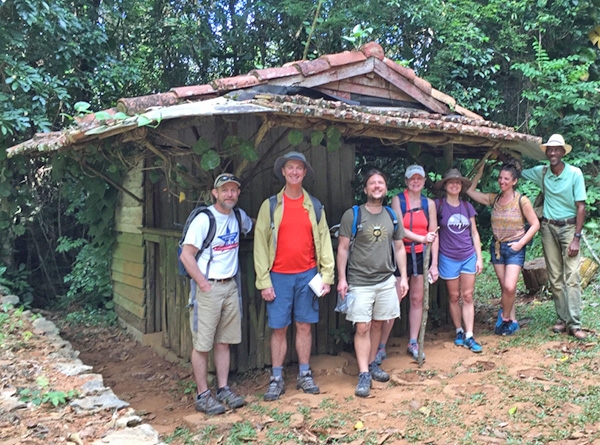In December 2016, Jeff Corbin, professor of biology, was part of a team of ecologists who traveled to Cuba to learn how the country’s unique political and economic history might have altered its natural history.
Experts in the study of exotic species invasions, the scholars visited major cultural sites such as Havana, Trinidad and the Bay of Pigs. They also spent time at unique bio preserves that highlighted Cuba's distinct biodiversity.
The eight-day trip sparked an international collaboration between academics from the New York Six Liberal Arts Consortium and two Cuban scientists into how the Cuban revolution and the U.S. embargo that followed influenced the island’s biodiversity today.
The group’s research showed that trade and tourism in the Caribbean are among the most important factors in understanding the establishment of invasive species in the region. However, Cuba’s recent history – its Revolution and the subsequent U.S. embargo – makes it stand out from the other islands of the region.
“We found that Cuba has hundreds fewer invasive plants than expected for its area, and the plant species that do occupy Cuba are distinct from other large Caribbean islands,” Corbin said. “This result is consistent with Cuba's limited economic openness, such as less trade and tourism per area compared to other Caribbean islands.”
The research is featured in a paper, “Plant Pirates of the Caribbean: Is Cuba sheltered by its revolutionary economy,” published by the journal Frontiers in Ecology and the Environment. The lead author is Meghan Brown, professor of biology at Hobart and William Smith Colleges. Corbin, Susan Cushman (Hobart and William Smith Colleges); Timothy McCay (Colgate); Joshua Ness (Skidmore); and the two Cuban scientists joined her. The scholars were supported in part by a NY6 Global-Upstate Collective grant.
Computer science major Jonathan Hanna ’20 and Nick Webb, assistant professor of computer science in the Center for Data Analytics, assisted with the research.
In 1959, Fidel Castro helped rebels overthrow a U.S.-backed dictator and install a Communist-run country. That in turn led to a decades-long U.S. embargo. As Cuba’s revolutionary economy took hold, the Caribbean emerged as a tourist mecca, introducing hundreds of invasive species to the area. As Cuba became more economically self-sufficient, it was cut off from the forces that brought invasive species to the region, researchers found.
These events coincided with the establishment of island biogeography and invasion biology as sub disciplines of ecological research.
“Species invasions are one of the major ways - along with climate change and pollution - that humans have altered the globe,” Corbin said. “When species arrive in new places they can have far-reaching effects on the region's biodiversity and ecology. As a result, Cuba’s unique 20th century history resulted in hundreds of missing invasive plants there.”
So what does the research mean going forward? According to Corbin, the work offers one of the best demonstrations of the role that tourism plays in spreading new species around the globe.
This is critical, because Cuba is expanding its tourism economy, already the second-largest industry on the island. That, along with the prospect of thawing Cuba-U.S. relations, may open up the pathway for a species invasion. Cuba's large size and unparalleled richness of native plants are indications of the Caribbean island’s capacity to support many more plants that are non-native in the future, Corbin said.
Such a threat, Corbin warned, requires cooperation between Cuba and its neighbors, including the U.S. and Puerto Rico, to limit species moving to and from the island.
“The explosive rates of species invasions in recent decades are the product of widespread exchange of people and goods via tourism and trade,” Corbin said. “Cuba's Revolution and the subsequent U.S. embargo created an unintended experiment that demonstrated that, when such tourism and trade were curtailed, rates of invasion declined. Knowing this, we can seek to install biosecurity measures that monitor and limit the importation of new species worldwide without limiting economic and cultural exchange.”


